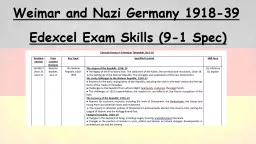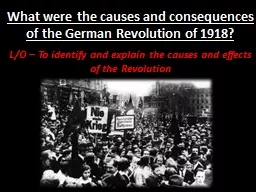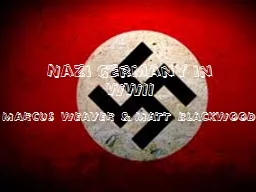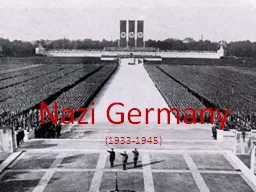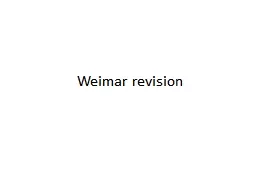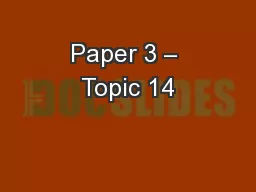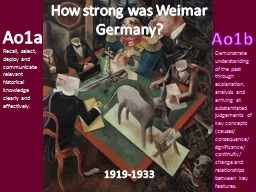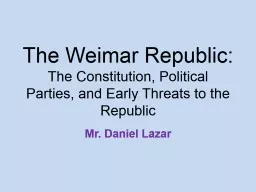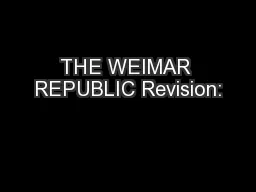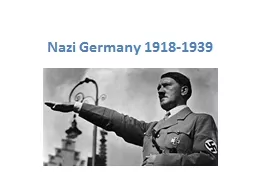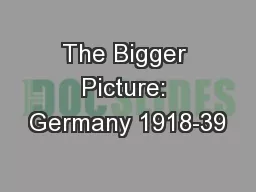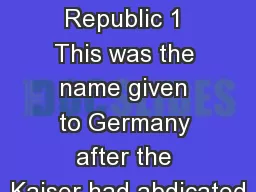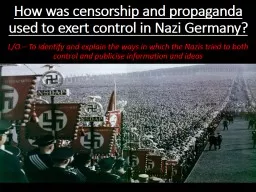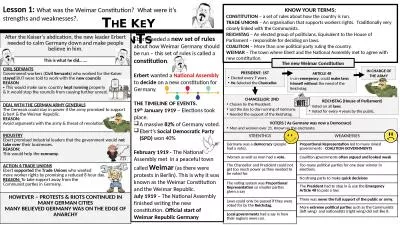PPT-Weimar and Nazi Germany 1918-39
Author : giovanna-bartolotta | Published Date : 2018-11-07
Edexcel Exam Skills 91 Spec Question 1 Making inferences Question 1 on your exam paper will ask you to infer from source A There are 4 marks available for this question
Presentation Embed Code
Download Presentation
Download Presentation The PPT/PDF document "Weimar and Nazi Germany 1918-39" is the property of its rightful owner. Permission is granted to download and print the materials on this website for personal, non-commercial use only, and to display it on your personal computer provided you do not modify the materials and that you retain all copyright notices contained in the materials. By downloading content from our website, you accept the terms of this agreement.
Weimar and Nazi Germany 1918-39: Transcript
Download Rules Of Document
"Weimar and Nazi Germany 1918-39"The content belongs to its owner. You may download and print it for personal use, without modification, and keep all copyright notices. By downloading, you agree to these terms.
Related Documents

